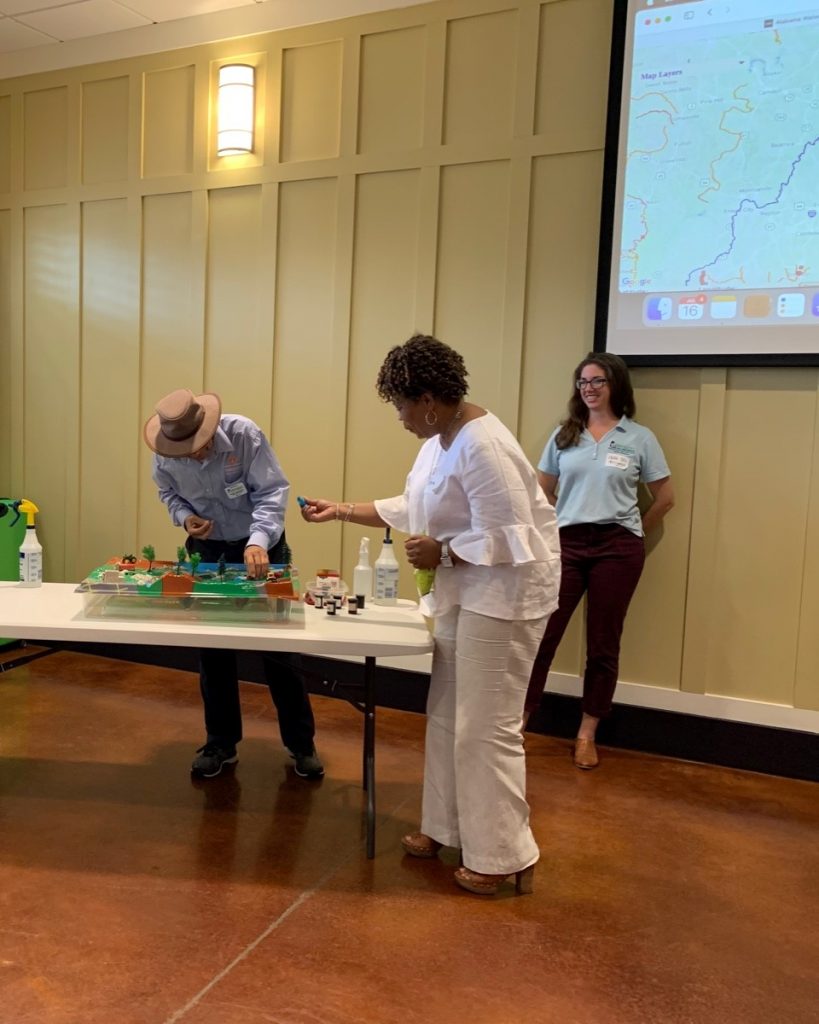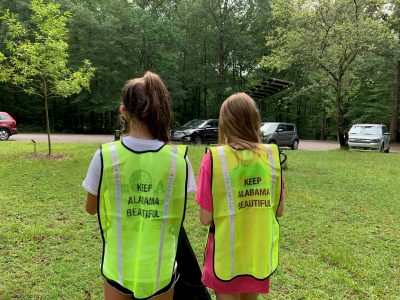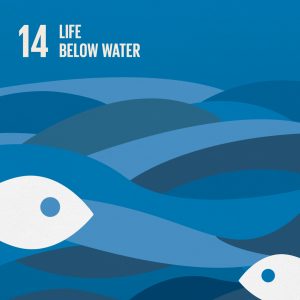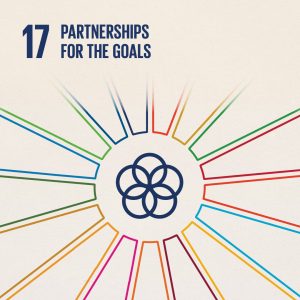By Eve Brantley.
Have you seen Jaws? I watched it as an 11-year-old, peeking through my fingers. The iconic line about needing a bigger boat describes the realization they are in a situation much bigger than originally anticipated. Each day we learn more about how our actions impact the world around us. The list of concerns is daunting including changing climate linked to extreme weather events (drought, hurricanes, flooding), cumulative impacts of land-use change, habitat loss, environmental justice, and more. Honestly, it feels overwhelming if we approach solutions on our own. Partnerships are essential to address the complexity of protecting and improving water resources – we need a very big boat.
The wonderful thing about partnerships and water resources is that everyone can contribute no matter the background or expertise. Water is a part of all of us and so we are all a part of the solution. Common themes for successful partnerships and projects include diverse expertise and viewpoints, open and respectful communication, creativity, organization, and dedication. These characteristics contribute to setting shared overarching goals, objectives that address the need, and a list of tasks to engage partners and build accomplishments.

The Parkerson Mill Creek Watershed Project on Auburn University’s campus is an excellent local example of collaboration. A management plan was developed to identify concerns and opportunities for the watershed (landscape) that influences Parkerson Mill Creek. This plan was funded by the Alabama Department of Environmental Management and developed by representatives from the Alabama Cooperative Extension System, City of Auburn, Lee County, Alabama Water Watch, private industry, interested citizens, and Auburn University faculty, staff, and students. The goal to improve water quality and stream health offers a chance for both highly technical solutions and easy to implement actions.
The stream enhancement projects along the Parkerson Mill Creek Greenway that connects the Wellness Kitchen to the new Intramural Fields are technical, innovative approaches to improve water and habitat quality of the stream. These complex projects require input from disciplines such as engineering, ecology, landscape architecture, planning, horticulture, and environmental sciences. Auburn University is a leader in their commitment to manage water resources in a manner that includes environmental considerations.
There are opportunities for involvement and partnerships to improve water in your backyard.
 If you are interested in learning more about the water quality of local streams, rivers, ponds, and lakes, the Auburn University Water Resources Center (WRC) Alabama Water Watch program provides training on chemical and bacteriological monitoring. The citizen scientist network of water monitors range in age from 12-90 with the commonality of curiosity, commitment to learning, and a desire to protect water. The data help paint a picture of trends that show where we are achieving goals or where we should focus efforts for improvement.
If you are interested in learning more about the water quality of local streams, rivers, ponds, and lakes, the Auburn University Water Resources Center (WRC) Alabama Water Watch program provides training on chemical and bacteriological monitoring. The citizen scientist network of water monitors range in age from 12-90 with the commonality of curiosity, commitment to learning, and a desire to protect water. The data help paint a picture of trends that show where we are achieving goals or where we should focus efforts for improvement.
Simple, less technical actions and projects also improve streams – put litter in a trash can, pick up pet waste, don’t let anything but rain go down a stormdrain. The WRC Alabama Watershed Stewards program provides a framework and tools to improve understanding of impacts on water, identify projects, and build community leadership teams.

The beauty of oceans, estuaries, rivers, lakes, and water resources in Alabama and our world is astonishing. Partnerships, education, and engaging in science-based actions are critical to make long-term, meaningful changes. I invite you to get involved with Auburn University Water Resources Center programs like Alabama Water Watch and Alabama Watershed Stewards for partnerships in protecting and improving water resources. We’re all in this boat together.
This guest post was written by Dr. Eve Brantley, Professor and Director, Auburn University Water Resources Center, Department of Crop, Soil and Environmental Sciences, Extension Water Resources Specialist.
Learn about the SDGs & AU and our contributions related to this post.






